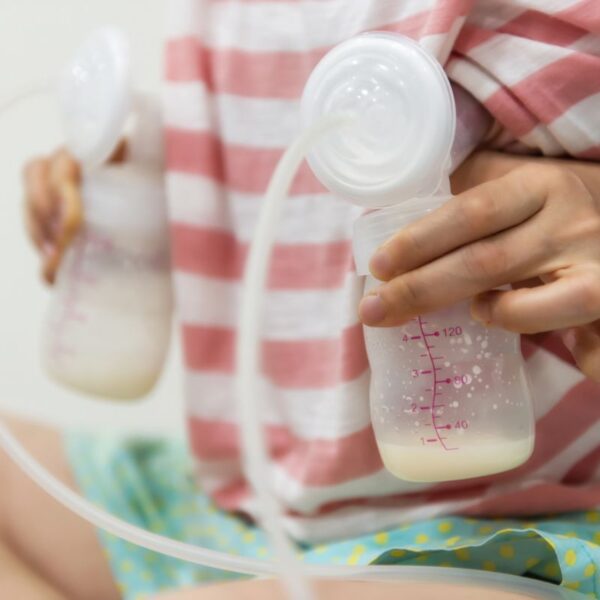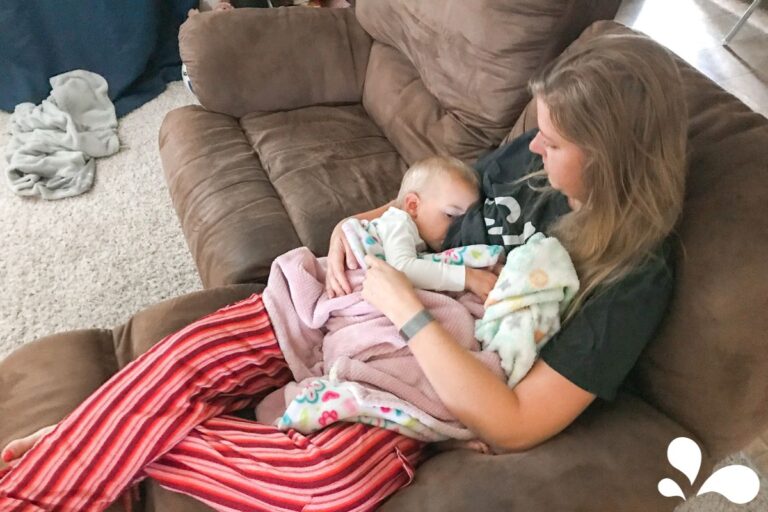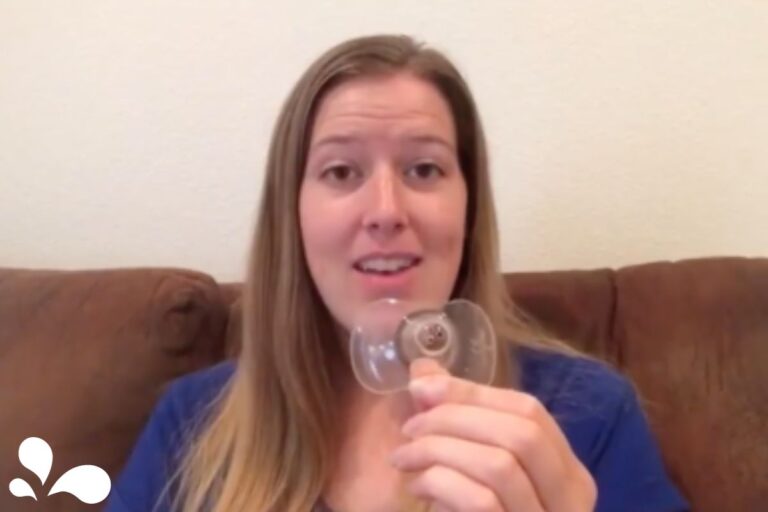Pumping, while also breastfeeding full-time, can feel cumbersome. Sometimes pumping mamas (who are also breastfeeding full-time) have to pump multiple times to get enough milk for one feeding. Knowing facts like this can help set expectations for yourself so that you’re able to feel empowered rather than frustrated.
- Flange Size Matters
- Use a hands-free pumping bra
- Use your hands
- Get into a let-down mindset
- Use heat
- Power Pumping
- Replace pump parts

Breastmilk Removal Expectations
First, let’s set our expectations as they should be. As I mentioned, it may take 2-3 pumping sessions to get enough milk to provide for a single feeding. In each pumping session, it’s typical for full-time nursing mamas to get an output of a half-ounce to two ounces combined from both breasts.

When should you start pumping?
Typically, you shouldn’t start pumping until three to four weeks postpartum, allowing your breastfeeding relationship to solidify and your supply to develop and regulate… Read the full blog post >>
It should be mentioned that there is no specific amount of milk that an exclusively pumping mom should expect. There are a variety of factors that contribute to the amount of milk produced. An exclusively pumping mom typically pumps 2-5 ounces, enough for a feeding.
No matter how much you pump, this amount does not indicate the amount of milk your baby gets at the breast. Every individual body responds differently to pumps, and typically, bodies don’t respond to pumps as they do babies.
Your body’s supply may temporarily dip if you’re ovulating or menstruating or at varying points in your hormonal cycle. These hormone-related drops are entirely normal.
Tips to Pump More Milk
1. Flange Size Matters
The size of your pump’s flange matters and is individual to your nipple. Pumping should not be painful. Pain while pumping is usually due to either trauma to the nipples or a flange that does not fit correctly (too big or too small).
When it comes to your pump flange fitting correctly you want your nipple to be pulled in without rubbing against the side of the flange (too small) and without pulling in your areola and other breast tissue (too big). Read more about using the right flange size.
This can sometimes be difficult to assess on your own. If you need help to get the correct flange size, let us know, and we would be happy to help.
2. Use a hands-free pumping bra
You’ll want a pumping bra whether you’re pumping a couple of times a day or a dozen times a day. This will help you so that your arms don’t get tired from holding the pump onto your breast.
It also allows you to do other things with your hands while you are pumping such as helping your baby or an older child, eating, working, and/or using your hands to help remove more milk.
Pumping can be time-consuming and doesn’t always fall into your schedule easily so when you are able to have your hands free to do other tasks while pumping it is extremely helpful. This hands-free pumping nursing bra is a great option.
3. Use your hands
Using your hands to massage and compress your breasts before, during, and after pumping helps to remove more milk. A breast pump is not as effective at removing milk as a baby with a good latch. With the help of your hands, a pump can become more effective. Watch this video where Dr. Jane Morton teaches about using your hands to remove more milk while pumping.

4. Get into a let-down mindset
Yes, this is a very real thing. Your mind is strong. You mentally have to put yourself in a position where you can have success with your breast pump.
The brain is very powerful and when you are distracted by other things it can cause a delay in the timing of your let-down (milk ejection reflex) while pumping. If you have ever pumped you may understand what I’m talking about.
I think of times where I have sat down, put the pump on, gotten on my phone, and 30 minutes later I’ve pumped one ounce. Yes, only one ounce in 30 minutes of pumping. I can also think of times where I sat down, put the pump on, and had six ounces pumped in 10 minutes. What was the difference (besides the amount of time pumping and amount of milk pumped)? It was my MINDSET.
When I sat down and thought about my baby, thought about milk flowing, and used items to help me get into that mindset I was able to pump way more milk in way less time.
Here are some tips to get into that “let-down mindset”:
- Look at pictures/videos of your baby(ies)
- Smell a blanket or clothing item of your baby’s
- Think of your milk flowing
- Think of waterfalls
- Stay as calm and relaxed as possible
You can do one or all of these. Find what gives you the best results and follow through.
5. Use heat
Heat is your friend when it comes to pumping. Using heat before and during pumping has been shown to increase milk removal and decrease the amount of time you spend pumping.
There are a lot of options for breastfeeding heating pads that you can use (find one on my favorite products page, however any heating pad works).
Apply heating pads to your breasts for several minutes before pumping, use your hands to massage your breasts, apply your breast pump, and continue to use heat over the flanges while pumping.
6. Power Pumping
Power pumping is when you do extra pumping sessions throughout the day to help boost your breastmilk supply. Power pumping is more common when you are exclusively pumping (if you are breastfeeding you can put baby to the breast more often to do the same thing) or if you are wanting to boost your supply and store some extra milk.
Power pumping mimics cluster feeding, where baby eats smaller portions more frequently. It is also done to help increase breastmilk supply by increasing demand.
Here are a couple of different methods of power pumping.
“Walk by Method” Power Pumping
Place your breast pump in a place in your home that you walk by several times a day. Every time you walk by it, sit down and pump for 10 minutes.
“Power Hour” Power Pumping
You take one hour a day and pump on and off for the hour.
- Pump 20 minutes on
- 10 minutes off
- 10 minutes on
- 10 minutes off
- 10 minutes on
That is 40 minutes of pumping in 1 hour.
“Super Flex” Power Pumping
Goal: 3 or more milk removals in a short amount of time allowing you to be flexible. You can do this while watching a TV show, between getting things done in the house, or however you can fit it into your day.
Power pumping is usually done for 3-5 days to mimic the timeframe of a growth spurt. Some women may see an increase in milk supply in that time range, for others it may take several more days to see an increase in milk supply.
Everyone is different and there are a lot of factors that go into how your body responds to this process.
7. Replace pump parts
Pump parts should be replaced on a regular basis to make sure that your pump is working effectively. Over time pump parts start to degrade and start to make your pump less effective at removing milk.
If you notice reduced milk output, reduced suction, and a decrease in your pump’s ability to remove milk it may be time to change out your pump parts.
How frequently you need to replace your pump parts depends on how frequently you use your pump. Check out the graphic below for recommendations on when to replace your pump parts. Always pay attention to the wear and tear of your pump parts and replace them sooner if you notice damage or distortion.
Whether you are exclusively pumping or pumping on occasion, we hope this information is helpful. We want you to feel empowered when feeding your baby. We’re happy to assist you with finding the right pump, pump part, part-fitting, etc.









